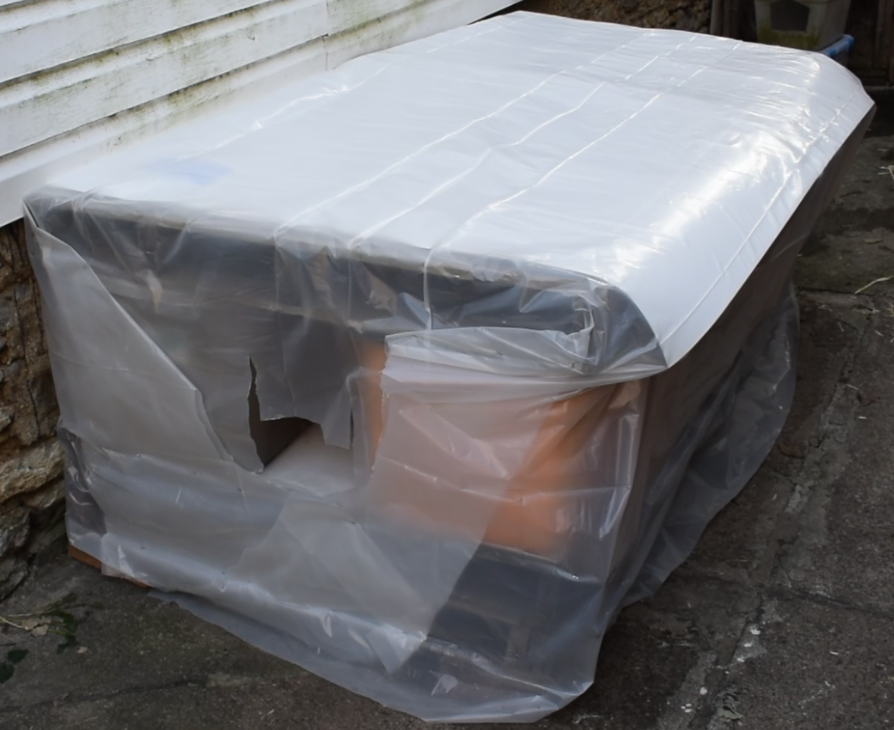

Feeding stations provide a dry area for community cats to eat and drink. Residents can place food and water inside the station so that the community cats can have an easy-to-clean, private area to eat and drink. Individual feeding stations are easily made using just a sturdy 18-gallon bin with a hole cut into it, just like the first step on the storage bin shelter construction. The hole should be a little larger, though, so that the food dish can be easily inserted.

Feeding stations should be elevated, just like insulated shelters. You want to make sure that snow doesn't cover the entrance and that the station remains dry inside. One way to do this is to stack a couple wooden pallets on the ground, and then place the shelters and feeding stations on pallets. Pallets are easily obtained from local retailers— just ask around! For extra protection, stack another wooden pallet onto the shelters and feeding stations (if you have three or more), and then add some type of flat cover to keep the rain and snow off the area. This cover should be sturdy and water-proof; something like this plastic panel will work if it's cut down to size. You can also wrap plastic sheeting around the pallets to create extra protection from the elements. If you do wrap the area in plastic sheeting, use a staple gun to attach the sheeting to the pallets so that the plastic doesn't blow off, and be sure to cut holes in the plastic sheeting on each side of the area so that the cats can enter and exit.
